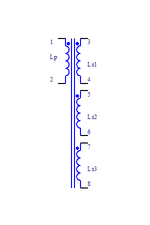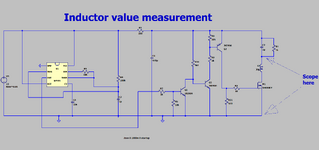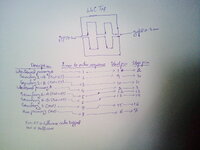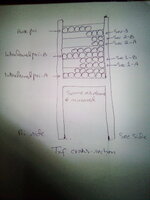Learner1234
Newbie level 6
Hi guys. I have a ferrite transformer consisting of one primary winding and 3 secondary windings. Now I want to measure the leakage inductance at the primary side, so I need to short the secondary windings. Most of the literature I have read, there is only one secondary winding so it's pretty straightforward how to short the secondary side. But now, I have 3 windings at the secondary side, I am considering of 3 possible ways to measure the leakage inductance at the 'primary side',
1. Short 3 and 4, 5 and 6, 7 and 8
2. Short each winding one by one while leaving other windings open, e.g. 3 and 4 shorted, 5 and 6 open, 7 and 8 open, etc.
3. Short 4 and 5, 6 and 7, 8 and 3.
Assume that my short circuit is perfect, what will be the result for above 3 ways of measuring leakage at primary side?
Now suppose that I have gapped the ferrite core. What will happen to leakage inductance at primary side for above 3 situations?
1. Short 3 and 4, 5 and 6, 7 and 8
2. Short each winding one by one while leaving other windings open, e.g. 3 and 4 shorted, 5 and 6 open, 7 and 8 open, etc.
3. Short 4 and 5, 6 and 7, 8 and 3.
Assume that my short circuit is perfect, what will be the result for above 3 ways of measuring leakage at primary side?
Now suppose that I have gapped the ferrite core. What will happen to leakage inductance at primary side for above 3 situations?



